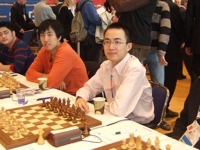NIMBioS Tuesday Seminar Series
In conjunction with the interdisciplinary activities of the National Institute for Mathematical and Biological Synthesis (NIMBioS), a seminar series will be hosted at NIMBioS every other Tuesday at 3:30 p.m. in the NIMBioS Lecture Hall on the 4th floor of 1534 White Ave., Suite 400 Seminar speakers will focus on their research initiatives at the interface of mathematics and many areas of the life sciences. Light refreshments will be served starting at 3 p.m.

Time/Date/Location: 3:30 p.m., Sept. 8, NIMBioS Lecture Hall, 1534 White Ave., Suite 400
Speaker: Dr. Erol Akcay, NIMBioS Post-Doc
Topic:The Evolution of Games and How to Play Them
Abstract:
Evolutionary game theory is one of the main theoretical tools for studying the evolution of social behaviors. In this talk, I will present two models that develop a new approach to how games and evolution are modeled. This approach explicitly and separately models both the behavioral and evolutionary dynamics of an interaction, and integrates these two. The first model treats individuals in a social interaction that are motivated by their internal objectives. The results of the interaction affect individuals’ fitness, which leads to evolutionary selection pressures on the objective functions of individuals. We show that even in a game with total conflict between individuals’ payoffs, the evolutionarily stable objectives can be such that individuals aim to increase their partner’s payoff as well as their own. In the second model, I treat the evolution of the game itself, using a population genetics model for traits that affect the payoffs in a simple, bimatrix game.
NIMBioS
1122 Volunteer Blvd., Suite 106
University of Tennessee
Knoxville,
TN 37996-3410
PH: (865) 974-9334
FAX: (865) 974-9461
Contact NIMBioS


